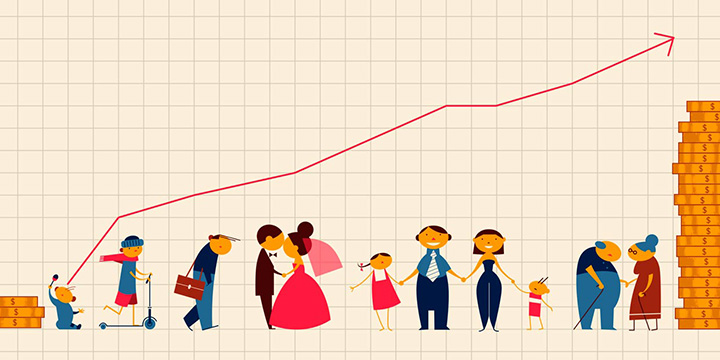Practically everyone agrees that the current pensions model in Spain is unsustainable in the long term. And what’s more, the arguments behind this theory are getting harder to ignore: over the past nine years, public spending on pensions has increased by 44 billion euros, according to a recent report by Caixabank.
In addition to this, the population pyramid is progressively inverting and the ratio of workers to pensioners has been on a downward trend in recent years. In 2007, the pension of each retired person was supported by 2.71 active workers; while by 2015, this ratio had fallen to 2.26.
Another obvious factor is that life expectancy is on the rise, resulting in a higher number of pensioners. In addition, Spain tends to have higher unemployment rates compared to similar countries of an equivalent economic standing, which also makes the problem worse.
However, researcher José Ignacio Conde-Ruiz goes one step further. He recently suggested in the Spanish newspaper Cinco Días that “even if Spain achieves full employment, the current demographic situation will lead in 2050 to the pensions system spending the equivalent of 17.4% of GDP but contributing just 10%”. In other words, the pensions system alone would create a public deficit of 7.4% of GDP, which is considerably beyond the 3% limit set in the EU Stability and Growth Pact.
Ultimately, taking these figures into account, if we don’t want our future retirement to depend solely on economic circumstances, political decisions, birth rates and unemployment figures, we should plan ahead and put our savings into a long-term investment plan sooner rather than later.
However, before making such a big decision, it is important to seek expert advice, compare the various alternatives and weigh them up according to our age and how we feel about the potential risk associated with these investments. Because, in the end, we all need to be sure that we’re making the right choice.
Every day that our savings remain stagnant, we lose a little more purchasing power
It makes no sense at all to let our savings stagnate, as this simply chips away at our purchasing power. In Spain, there are 500 billion euros in current accounts with an average yearly interest rate of 0.07%. Then, there are another 260 billion euros in term-deposit accounts, with an average yearly rate of 0.11%. In other words, these products offer practically no return at all. What’s more, taking inflation into account, they actually end up losing you money.
By the end of 2016, a total of 235.34 billion euros had been invested in the investment funds on the market in Spain, according to data from Inverco. Of this figure, 123.705 billion euros (52.5%) were invested in very conservative products, giving an average yearly return, from 2000 to 2015, of between 2.68% and 1.6%, taking account of all categories of conservative funds.
In this same period, variable-rate funds offered the highest rates of return. And the best product, with an average yearly return of 13.2% and a cumulative return of 542%, was Bestinfond, which was managed by Francisco García Paramés for 14 of the 15 years mentioned above.
However, if we look at the whole period over which García Paramés managed this fund, from 13 January 1993 to 21 September 2014, the average yearly return rises to 15.7% and the cumulative return to 2,466%.
To get an idea of what these percentages mean in real terms, let’s look at two people who entrusted their savings to García Paramés at the start of 1993. The first decided to transfer 7 million pesetas (42,000 euros) from their bank account to this fund and 21 years later, this amount had grown to 1,077,845 euros.
In the second case, the person received 20 million pesetas (120,000 euros) from the sale of a house and decided to invest this money in the same fund. By September 2014, their savings already amounted to 3,079,557 euros.
These two cases show that choosing a good long-term investment can provide more than just a top-up to whatever state pension we might received; it can become more than enough to cover our needs once we retire. It all depends on the risk that we’re willing to assume and the duration of our investment. That’s why it is so important to get started as soon as possible and to wait patiently for the results of a good value investment.
Did you find this useful?
- |







